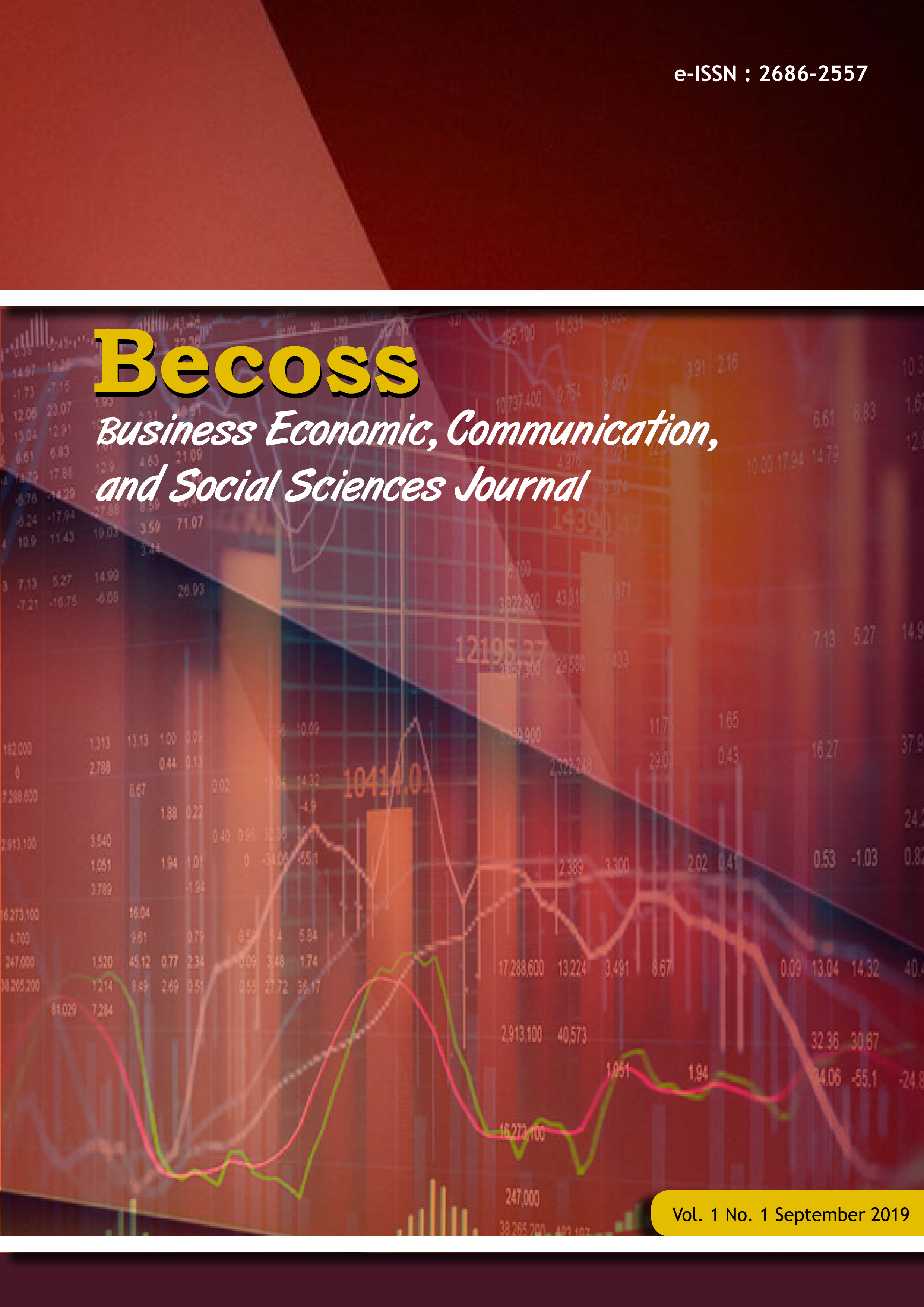ANALISA PERBANDINGAN PENGGUNAAN KATA KETERANGAN DERAJAT BAHASA MANDARIN DAN BAHASA INDONESIA
DOI:
https://doi.org/10.21512/becossjournal.v1i1.5984Keywords:
汉è¯ç¨‹åº¦å‰¯è¯, å°å°¼ç¨‹åº¦å‰¯è¯, Degree adverbs, The analysis comparisonAbstract
Both modern Chinese and Bahasa have adverbs in common. In adverb, adverb of degree plays an important role in grammar as well as to express level of degree itself. Although there are a few of them, only around a dozen are being used frequently. Main usage of Chinese degree adverb is to qualify psychological verb, adjective and also noun. Main usage of Bahasa degree adverb is to adverbial. The position of Bahasa degree adverb is so flexible that can be used in before and after subject, or in the last sentence. There are similarities and also differences in the usage from both Chinese and Bahasa. Thus, in the process of learning the adverb of degree in Chinese, foreign student or in this case Indonesian students fnd it a little hard to understand. Indonesian students who learn Chinese usually make bias or error during the learning adverb of degree. These bias and error would influence the accuracy of expression used directly. The author will analyze degree adverb’s the similarities and differences using literature collection method in this research. At the same time, for Indonesian students learning degree adverb aspect put forward more suitable teaching and studying suggestions. Based on that, the author will only focus on commonly used adverb of degree such as “very, highly, extremely, to what extent, rather, too, fully, most, more, and a littleâ€, to minimalize the bias that the students make. There are explanations in every example for using Chinese and Bahasa degree adverb. The author hopes this research can help Indonesian students to learn Chinese adverbs of degree furtherReferences
刘慧丽. “程度副è¯+åè¯â€ç»“构的认知ç†æ®åŠå…¶ä¿®è¾žä»·å€¼. åå °èŒä¸šæŠ€æœ¯å¦é™¢å¦æŠ¥,2008(03):97-99
æ¨é¢–姣. 程度副è¯â€œå¾ˆâ€ä¸Žâ€œå¥½â€ä¹‹æ¯”较. 赤峰å¦é™¢å¦æŠ¥(汉文哲å¦ç¤¾ä¼šç§‘å¦ç‰ˆ), 2016(1), 100-117
å½å‡¤, 易红. 汉è¯ç¨‹åº¦èŒƒç•´è®¤çŸ¥åˆ†ç±»åŠè¯è¨€åŒ–过程. 江汉å¦æœ¯,2013(03):96-101.
朱磊. (2012). 现代汉è¯ç¨‹åº¦å‰¯è¯çš„æ–°å½¢å¼å’Œæ–°åŠŸèƒ½ç ”究. 上海师范大å¦
赵军. 现代汉è¯ç›¸å¯¹ç¨‹åº¦å‰¯è¯è¯ä¹‰å移性考察. 云å—师范大å¦å¦æŠ¥(对外汉è¯æ•™å¦ä¸Žç ”究版), 2007(04):84-88.
赵雪. (2008).《现代汉è¯è¯å…¸ã€‹ç¨‹åº¦å‰¯è¯é‡Šä¹‰ç ”究.河北师范大å¦.
蔡飞. (2009). “程度副è¯+åè¯â€ç»“æž„å¤šè§’åº¦ç ”ç©¶.上海外国è¯å¤§å¦.
林雪莹. (2010). 汉è¯ã€å°å°¼è¯æ—¶é—´å‰¯è¯ã€è¯æ°”副è¯åŠç¨‹åº¦å‰¯è¯å¯¹æ¯”ç ”ç©¶.厦门大å¦å‡ºç‰ˆç¤¾, 54-64.
Alwi H., Soenjono D.,Hans L.,Anton M.M. (2003). Tata Bahasa Baku Bahasa Indonesia. Jakarta:Balai Pustaka.
å¼ è°Šç”Ÿ. (2000). 现代汉è¯å‰¯è¯çš„性质ã€èŒƒå›´ä¸Žåˆ†ç±». è¯è¨€ç ”究.
贾俊æ°. 程度副è¯â€œè¶…â€å°è®®. 剑å—æ–‡å¦(ç»å…¸æ•™è‹‘),2011(11):120+122.
å¼ å‰‘. (2011). 对外汉è¯å‰¯è¯æ•™å¦ä¹‹è¯å¢ƒè®¾è®¡ç ”究.沈阳师范大å¦.
Downloads
Published
How to Cite
Issue
Section
License
Authors who publish with this journal agree to the following terms:
- Authors retain copyright and grant the journal right of first publication with the work simultaneously licensed under a Creative Commons Attribution License - Share Alike that allows others to share the work with an acknowledgment of the work's authorship and initial publication in this journal.
- Authors are able to enter into separate, additional contractual arrangements for the non-exclusive distribution of the journal's published version of the work (e.g., post it to an institutional repository or publish it in a book), with an acknowledgment of its initial publication in this journal.
- Authors are permitted and encouraged to post their work online (e.g., in institutional repositories or on their website) prior to and during the submission process, as it can lead to productive exchanges, as well as earlier and greater citation of published work.
USER RIGHTS
All articles published Open Access will be immediately and permanently free for everyone to read and download. We are continuously working with our author communities to select the best choice of license options, currently being defined for this journal as follows: Creative Commons Attribution-Share Alike (CC BY-SA)






